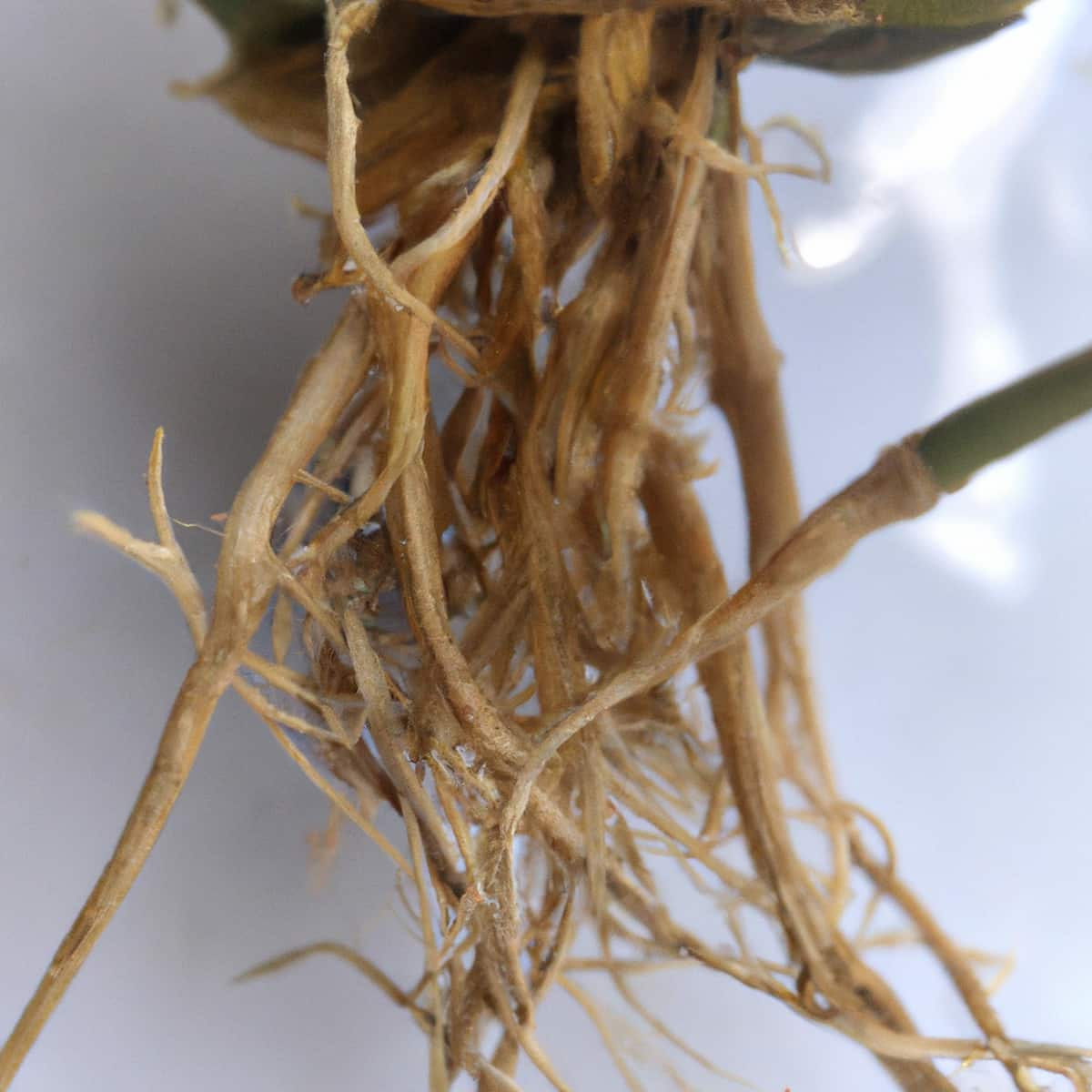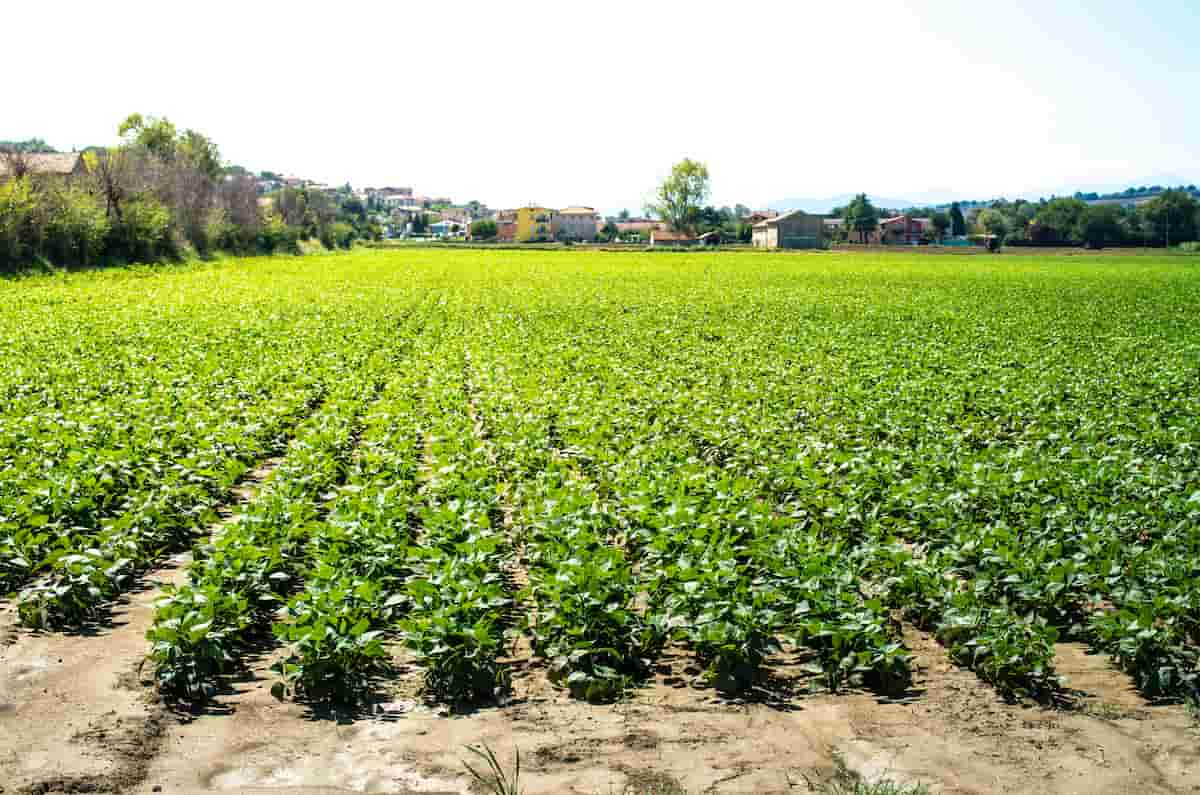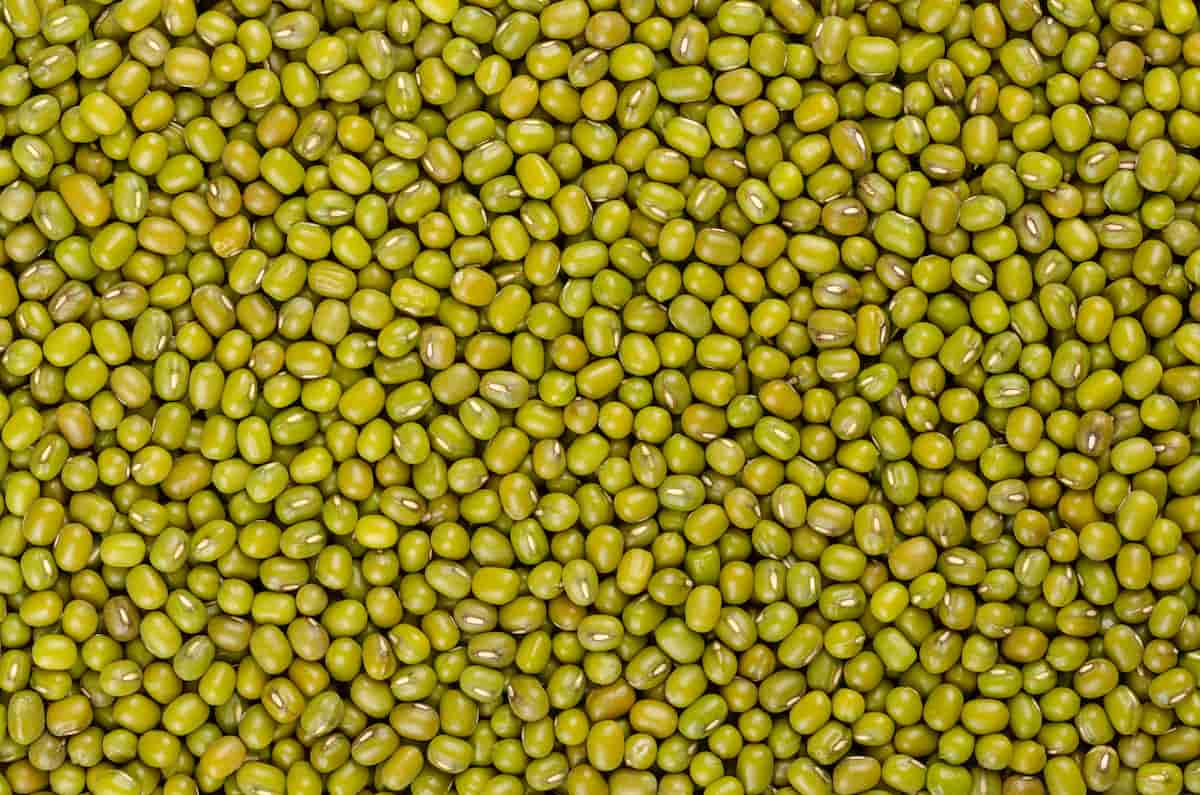Green gram, or mung bean, is susceptible to a fungus disease called dry root rot. Caused by the fungi Rhizoctonia solani, which can live in soil for years without dying off, this disease is a major agricultural problem. Green gram producers face a serious issue with dry root rot, which can lead to huge losses in crop production. Green gram shows signs of dry root rot, such as wilting, leaf yellowing, and eventual death.

There may be dark or brown lesions on the stems of diseased plants, and the roots themselves dry out and become brittle. Destruction of plants is possible in extreme situations. Extreme heat and humidity promote the rapid spread of dry root rot, which is especially problematic in densely planted areas. Infected seeds or plant residue material are common sources for spreading the disease to new areas.
Green gram needs biological and chemical control methods to prevent dry root rot. The possibility of infection can be lowered by rotating crops, not sowing in proper spacing and seed variety areas, and employing disease-free seeds. In addition, fungicides can be used to manage the disease, though their effectiveness may be moderate.
Dry Root Rot Management in Green Gram
The Causal Organisms of Dry Root Rot Disease
The causal organism of dry root rot disease is the fungus Rhizoctonia bataticola, also known as Macrophomina phaseolina in its pycnidial stage. The fungus produces dark brown, septate mycelium with constrictions at hyphal branches. It also produces abundant minute, dark, round sclerotia, the primary means of survival and pathogen spread. The fungus also forms dark brown, globose oscillated pycnidia on the host tissues. These pycnidia contain thin-walled, hyaline, single-celled elliptical pycnidiospores responsible for disseminating the pathogen.
The Disease Cycle of Dry Root Rot Disease
The disease cycle of dry root rot in green gram begins with the survival of the fungus Rhizoctonia bataticola (or Macrophomina phaseolina in its pycnidial stage) in infected plant residue, a facultative parasite in the soil. In the next stage, the sclerotia germinate in the presence of moisture and infect the host plant’s roots.
The fungus then colonizes the plant’s vascular system, leading to the characteristic symptoms of dry root rot. The secondary spread of the disease occurs through air-borne pycnidiospores, produced by the fungus in dark brown, globose ostiolated pycnidia on the host tissues. These pycnidiospores are responsible for disseminating the pathogen to healthy plants and causing new infections.
Causes/Conditions Favorable for Dry Root Rot Disease in the Field
- The soil-borne fungi Macrophomina phaseolina causes green gram dry root rot.
- The disease thrives in hot, dry conditions with daytime temps around 30°C.
- The disease thrives in dry periods followed by irrigation, because the fungus can attack plant roots.
- Late blooming and podding plants suddenly wilt and dry from the disease.
- Seed-borne and soil-borne, the fungi can live in sclerotia for years. Temperature and moisture stress can intensify the disease in hot damp areas.
Symptoms of Dry Root Rot Disease
- Yellowing and drying of leaves.
- Straw-colored leaves and stem.
- Brown discoloration on lower leaves and stems, brittle taproot, scattered drying of plants.
- Dark brown lesions on the stem at ground level.
- Shredding symptom on bark, black minute sclerotia on the rotten stem, and root tissues.
- Small spots with pale brown centers and reddish brown margins on branches and pods, severe leaf spotting and defoliation during flowering and pod formation
Dry Root Rot Disease Yield Loss in Green Gram
Managing dry root rot disease in green gram involves disease-free seeds, crop rotation, avoiding dense plantings, and applying fungicides. The disease can cause major yield losses of up to 50-100% under favorable conditions, making prevention and control essential for maintaining crop productivity.
In case you missed it: Anthracnose Management in Green Gram/Mung Bean: Symptoms, Identification, Treatment, Chemical, Biological, Natural, and Organic Control

Dry Root Rot Management in Green Gram by Cultural Method
- Avoid sowing green gram in the same field for consecutive years via crop rotation.
- Cover the soil with translucent plastic to heat the soil and eliminate the pathogen.
- Use seeds free of disease or treat seeds with fungicides before sowing.
- Balanced fertilization: To promote plant growth and reduce susceptibility to disease, apply balanced fertilizers.
- Maintain optimal soil moisture levels to reduce plant stress and prevent disease development.
- Avoid planting densely to increase air circulation and decrease humidity levels.
- Eliminate weeds that could function as alternate hosts for the pathogen during weeding.
- To reduce disease susceptibility, maintain plant health by taking expeditious and appropriate measures, such as timely weeding, fertilization, and irrigation.
Dry Root Rot Management in Green Gram by Biological Method
- Carbendazim and Thiram can protect seeds from pathogens. Seed pelleting with beneficial microbes like Trichoderma viride or Pseudomonas fluorescens improves germination and protects long-term pathogens.
- Farmyard and green leaf manure improve soil health and increase helpful microorganisms, suppressing pathogens. Natural chemicals in neem cake inhibit fungal growth, making it a biopesticide.
Dry Root Rot Management in Green Gram by Chemical Method
- Basal application of zinc sulfate 25 kg/ha or neem cake @ 150 kg/ha.
- Soil application of P. fluorescens or T. viride at 2.5 kg/ha + 50 kg of well-decomposed FYM or sand 30 days after sowing.
- Spot drenching of Carbendazim @ 1 gm/ lit.
- Dry root rot is difficult to treat chemically because the fungus can infect various hosts and live in the soil for extended periods.
- Seed treatment by fungicides with Carbendazim and mancozeb, followed by soil drenching, can help reduce the incidence of the disease to some extent.
Dry Root Rot Management in Green Gram by Organic/Natural Method
Organic/natural methods can help manage dry root rot in green gram. Aqueous extracts and oil of neem, as well as other plant extracts, have been found to inhibit the growth of M. phaseolina. Biocontrol agents such as Trichoderma viride and Trichoderma harzianum are also effective in reducing the incidence of the disease.
Preventive Measures for Control of Dry Root Rot Disease
Selecting tolerant varieties, planting early maturing varieties, keeping good soil moisture, frequently monitoring the field, and deep plowing to remove infected plant debris are all part of preventing the onset of dry root rot in green gram. After harvest, soil solarization can disinfect the soil, and cultivating the crop in raised beds and furrows before planting is helpful. To prevent the disease from recurring, a three-year crop rotation with non-host crops such as sorghum or fenugreek is recommended.
In case you missed it: Powdery Mildew Management in Green Gram/Mung Bean: Symptoms, Identification, Treatment, Chemical, Biological, Natural, and Organic Control

Conclusion
Managing the disease requires a combination of cultural, biological, chemical, and preventive measures. Tolerant varieties, early sowing, and regular monitoring can help prevent the disease. Maintaining good soil moisture, removing infected plant debris, and practicing crop rotation with non-host crops are essential.
- Deworming Schedule for Dogs/Puppies: A Beginners Guide
- How to Prevent and Control Parasites in Goats
- Beneficial Insects in Pest Management
- Natural Solutions for Pest Control in Flower Gardens
- Types of Fungicides Used in Agriculture
- Common Issues in the Fruit Development Stage of Pomegranate Farming
- Fruit Development Issues in Papaya: Easy Solutions and Treatment
- Soil-Borne Diseases and How to Protect Your Plants
- Practices to Prevent Disease Spread in the Garden